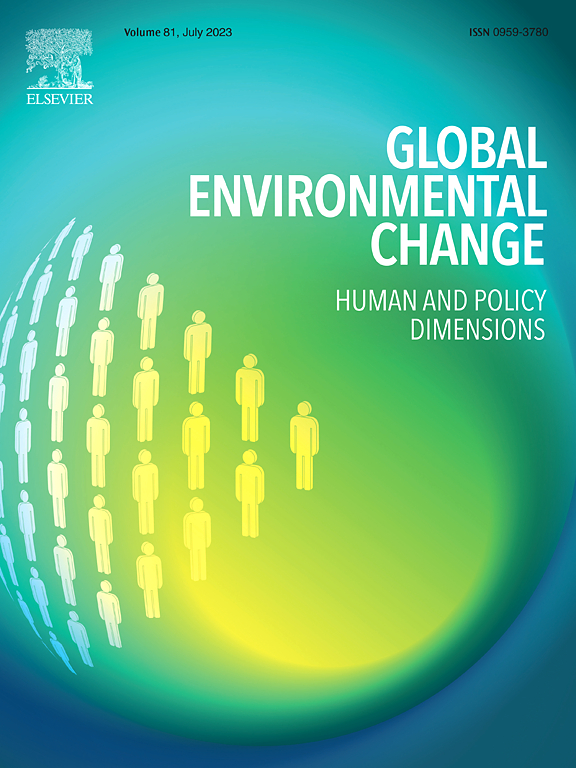明日之味:不同共享社会经济路径下的粮食需求弹性预测
IF 9.1
1区 环境科学与生态学
Q1 ENVIRONMENTAL SCIENCES
引用次数: 0
摘要
粮食政策评估和粮食需求预测依赖于需求弹性。然而,所使用的弹性通常缺乏粒度,并且依赖于特定的调整以使其随时间发展。在本研究中,我们探索了一种使用元分析数据库和XGBoost机器学习算法来预测粮食需求弹性的替代方法。接下来,我们使用共享社会经济路径(ssp)数据库对2030年、2040年和2050年的弹性进行了预测。然后对弹性进行校准以符合理论条件,并在可计算一般均衡(CGE)模型中用于参数化需求系统。最后,利用CGE模型,我们通过模拟四组简单情景来说明新参数的含义。作为输出文件,我们提供了(1)12个食品类别、138个国家和5个ssp的收入、自有价格和交叉价格(补偿和未补偿)弹性;(2)它们的校准对应项;(3)CDE需求系统的等效扩展和替代参数。这些参数可广泛应用于情景构建和政策评估。本文章由计算机程序翻译,如有差异,请以英文原文为准。
A taste of tomorrow: Predicting food demand elasticities under different Shared Socioeconomic Pathways
Food policy assessments and food demand projections rely on demand elasticities. The elasticities used, however, often lack granularity and depend on ad hoc adjustments to make them evolve over time. In this study we explore an alternative approach using a meta-analysis database and the XGBoost machine learning algorithm to predict food demand elasticities. Next, we use the Shared Socioeconomic Pathways (SSPs) database to project the elasticities to 2030, 2040, and 2050. The elasticities are then calibrated to comply with theoretical conditions and used to parameterize the demand system in a Computable General Equilibrium (CGE) model. Finally, using the CGE model, we illustrate the implications of the new parameters by simulating four sets of simple scenarios. As output files we provide (1) income, own-price, and cross-price (both compensated and uncompensated) elasticities for 12 food groups, 138 countries, and 5 SSPs, (2) their calibrated counterparts, and (3) the equivalent expansion and substitution parameters for a CDE demand system. These parameters can be applied in a wide range of scenario building and policy assessments.
求助全文
通过发布文献求助,成功后即可免费获取论文全文。
去求助
来源期刊

Global Environmental Change
环境科学-环境科学
CiteScore
18.20
自引率
2.20%
发文量
146
审稿时长
12 months
期刊介绍:
Global Environmental Change is a prestigious international journal that publishes articles of high quality, both theoretically and empirically rigorous. The journal aims to contribute to the understanding of global environmental change from the perspectives of human and policy dimensions. Specifically, it considers global environmental change as the result of processes occurring at the local level, but with wide-ranging impacts on various spatial, temporal, and socio-political scales.
In terms of content, the journal seeks articles with a strong social science component. This includes research that examines the societal drivers and consequences of environmental change, as well as social and policy processes that aim to address these challenges. While the journal covers a broad range of topics, including biodiversity and ecosystem services, climate, coasts, food systems, land use and land cover, oceans, urban areas, and water resources, it also welcomes contributions that investigate the drivers, consequences, and management of other areas affected by environmental change.
Overall, Global Environmental Change encourages research that deepens our understanding of the complex interactions between human activities and the environment, with the goal of informing policy and decision-making.
 求助内容:
求助内容: 应助结果提醒方式:
应助结果提醒方式:


